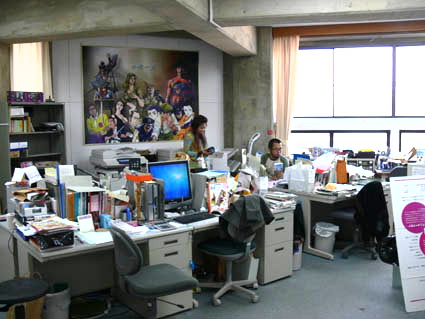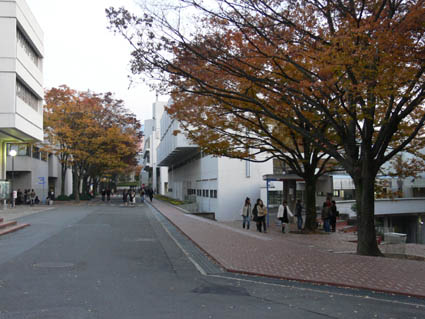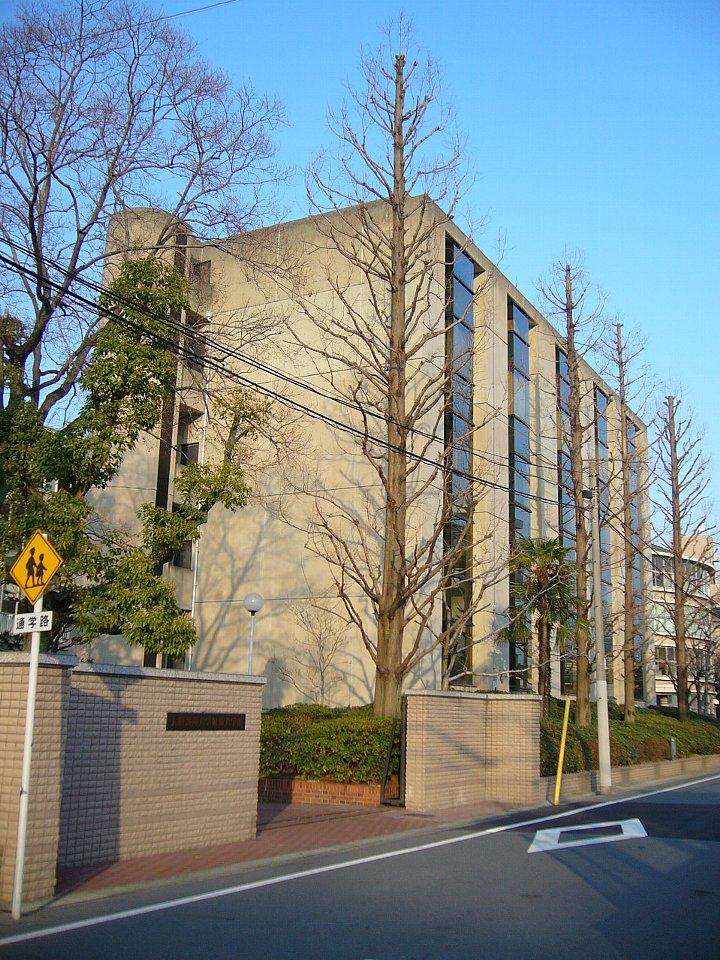Thinking about studying art and design in Japan? Osaka University of Arts (OUA) offers a concentrated, hands-on environment that brings 15 creative departments together on one hillside campus, plus an urban “Sky Campus” in central Osaka. This guide is written for international candidates who want a clear picture of programs, facilities, tuition (¥), support, exchange options, and everyday life around the university. You’ll also find links to official pages and recent data so you can verify details quickly before you apply.

Source: Wikimedia Commons — Photo by Fredrik Strömberg — License: CC BY-SA 3.0.

Source: Wikimedia Commons — Photo by Fredrik Strömberg — License: CC BY-SA 3.0.

Source: Wikimedia Commons — Photo by Fredrik Strömberg — License: CC BY-SA 3.0.

Source: Wikimedia Commons — Photo by 663highland — License: CC BY 2.5.

Source: Wikimedia Commons — Photo by Bakkai — License: CC BY 3.0.
Quick Facts (OUA at a Glance)
Numbers below reflect the most recent official releases from Osaka University of Arts. Source pages are linked beside each metric for your convenience.
| Type | Private (Osaka University of Arts) |
|---|---|
| Total Students | Undergraduate: 5,615; Graduate: 105; Total: 5,720 Official Student Dynamics |
| Campuses | Main: Kanan, Osaka (Higashiyama 469) Access (EN); Urban satellite: “Sky Campus” (Abeno Harukas) Sky Campus access |
| Faculties/Schools (Departments) | 15 departments: Art Science; Fine Arts; Design; Crafts; Photography; Architecture; Visual Concept Planning; Character Creative Arts; Literary Arts; Broadcasting; Art Planning; Theatrical Arts; Musicology; Music Performance; Art & Primary Education List (EN) |
| Tuition Fees | Typical undergraduate annual total: ¥1,510,000 for 2025 entrants (tuition ¥1,080,000 + facility fees ¥430,000; variations by department) Official Tuition (JP) |
| Gender Ratio | Not officially published by OUA (no breakdown on the latest statistical PDF). Student Dynamics |
| Intl‑Student % | Not separately disclosed on public statistical tables; figures are included in overall headcounts. Details |
| Students per Staff | ≈22.9 : 1 (5,720 students / 250 full‑time faculty & staff noted in the “faculty count” table) Faculty Count |
| Financial Disclosure | Annual financials & institutional disclosures (JP). Information Disclosure |
Tip: tuition varies by department and entry year; always check the latest table for your program.
Campus Maps
Main Campus (Kanan, Osaka Prefecture)
Address: 469 Higashiyama, Kanan-cho, Minamikawachi-gun, Osaka 585-8555, Japan
Sky Campus (Abeno Harukas, Osaka City)
Address: Abeno Harukas F24, 1-1-43 Abenosuji, Abeno-ku, Osaka 545-6090, Japan
Mission, History & Founding Story
Osaka University of Arts (OUA) is one of Japan’s largest private arts universities. The institution’s roots trace back to the immediate postwar period and evolved through several name changes before becoming “Osaka University of Arts” in 1966. Its mission centers on cultivating creators who can both master tradition and push into new media, guided by a strongly practice-led approach across fine arts, design, media, music, theater, architecture, and education. The university emphasizes cross-disciplinary exchange: studios, stages, labs, and workshops sit within walking distance on the main Kanan campus, and many projects intentionally blend students from multiple departments.
OUA also runs an urban “Sky Campus” inside the Abeno Harukas complex—one of Osaka’s landmark skyscrapers—hosting lectures, public-facing events, and industry collaborations. For basic access information in English, see the official page here, and details for the Sky Campus elevator routing here. The “one campus, many disciplines” concept is a practical advantage: it’s easy to borrow skills, facilities, and collaborators outside your major, a theme you’ll notice throughout the university’s official department pages (15 departments).
Financial and institutional transparency is published on the university’s disclosure page (in Japanese). If you need the latest governance reports, student/faculty counts, or audited financial statements, you can pull them directly from Information Disclosure, including up-to-date student numbers (students) and faculty counts (faculty).
Key Strengths & Unique Features
Art Science: where computation meets performance
If you’re drawn to interactive installations, drones, or motion-capture choreographies, OUA’s Art Science area will catch your eye. The university organized “discrete figures 2022version” (Rhizomatiks × ELEVENPLAY × Kyle McDonald), a showcase blending AR, drones, and stagecraft; the project pages outline concept, technology, and credits in English overview | technology | information. This kind of work signals the program’s comfort with code, sensors, and performance contexts—valuable if you aim for media arts or creative tech roles after graduation.
Flagship department: Character Creative Arts
OUA’s Character Creative Arts trains students to design characters and stories that travel across media and markets. The department description (EN) explains the “principles of characters” curriculum and its applied courses in planning, production, and business official page. On the activity side, the university regularly hosts editorial portfolio reviews with professional manga editors—see this report of a “visiting editorial desk” event held at Sky Campus with multiple editors from Shogakukan titles event recap (JP).
Related strengths
If your interests sit nearby, check Visual Concept Planning (image-making and motion at professional standards) and Literary Arts (editing, publishing, and media writing). For students focused on music’s live side, the Music Performance department provides soundproof studios and performance venues.
One campus, 15 departments: collaboration by design
Because most departments share a single campus, collaboration is more than a buzzword. OUA’s department list (EN) gives you a quick scan of majors—from Fine Arts and Crafts to Architecture and Photography (full list). Facility pages highlight campus-wide assets like the Art Information Center and performance halls that support project workflows across majors facilities.
City-facing “Sky Campus” for public events
OUA engages with the city through its Sky Campus at Abeno Harukas—useful for public exhibitions, guest lectures, and industry-facing critiques. Elevator routing and visitor details are on the official access tab here. If you want a program that alternates between quiet making (Kanan) and outward-facing presentation (central Osaka), this split will suit you.
Crafts with partners in the city
The Department of Crafts regularly mounts city collaborations—see the “Osaka Art & Design 2025” program pages announcing “The Power of Crafts 2025,” a large exhibition/sale with Kintetsu Department Store involving alumni, faculty, and students overview | program detail.
Student Life for Internationals
Clubs & Circles that welcome overseas students
OUA’s club scene ranges from performance to media production—great entry points for language practice and friends across departments. Start with the main list Clubs & Circles (JP), then sample a few pages: CAS (Anime/Manga), SFA (Tokusatsu & CG), Light Music Club, and Voice Circle “Link”.
Support offices: visa, housing, counseling
International programs and short-term exchanges are coordinated via the university’s International section (JP), which outlines partner schools, FAQs, and estimated overseas costs. Practical student support—from dormitory referrals to commuter passes—is centralized on the Student Support portal. For personal counseling in English-friendly settings, the Campus Life Support Room provides private consultations and a casual “free space” (JP). The university’s self-evaluation report also describes health and psychological counseling networks across units (JP PDF).
Partner Institutions & Exchange Options
OUA maintains a set of sister/partner schools for short-term exchange, many of them in the U.S. and Europe. The official International page lists examples (e.g., University of Applied Arts Vienna; U.S. art schools such as San Diego State University, Maryland Institute College of Art, Cleveland Institute of Art, Kansas City Art Institute) and provides admissions notes and language requirements International (JP). For instance, Kansas City Art Institute confirms OUA as a partner and notes the need for Japanese proficiency when going the other direction KCAI Exchange page (EN).
Costs and timing. OUA specifies that during exchange you continue paying tuition to OUA (not the host), while overseas living and fees are borne by the student. The example for a U.S. West Coast university shows an estimated local cost of $16,290 for one academic year (housing, food, local fees, transport, books & supplies, personal expenses)—roughly ¥2.6 million at ¥160 per $1, but your exchange rate may differ. See the FAQ on the International page for the breakdown (JP).
Local Climate & Lifestyle
Weather. Greater Osaka has humid summers and mild winters. Recent five-year observations for Osaka show August daytime highs commonly in the low–mid 30s °C, with winter nights in January around 1–3 °C at the coolest. For reference data and monthly climate patterns, see recent observations (Meteostat station “47772”) Meteostat and monthly climate charts for Osaka city Timeanddate.
Safety & daily costs. Osaka is a large, lively metro with typical big-city common sense required. For comparative snapshots, see community-compiled indicators for crime and cost of living (citywide): crime index and cost of living. Your actual experience will depend on neighborhood and spending habits.
International Student Statistics
OUA’s publicly posted statistics aggregate domestic and international headcounts and do not break down nationality in the latest “Student Dynamics” PDF. That file does show total enrollments: Undergraduate 5,615; Graduate 105 (as of May 1, 2025). If you need precise counts by country, contact the International section directly via the page above. Source: Student Dynamics (JP PDF).
Career & Graduate Prospects
OUA’s Career Support office offers ongoing guidance, portfolio checks, and job search resources Career Support (JP). The latest outcomes table in the Student Dynamics PDF lists 1,269 undergraduate graduates in 2024 (令和6年度), with 859 reported as employed and 74 progressing to further study (department-by-department details are included). See the “Graduates & destinations” section in the same PDF for the full breakdown Outcomes table.
Graduate School (Quick Note)
For graduate-level applicants, OUA’s Graduate School page (EN) describes the Artistic Culture (theory) and Artistic Creation (practice) tracks and their admissions windows Graduate School (EN).

